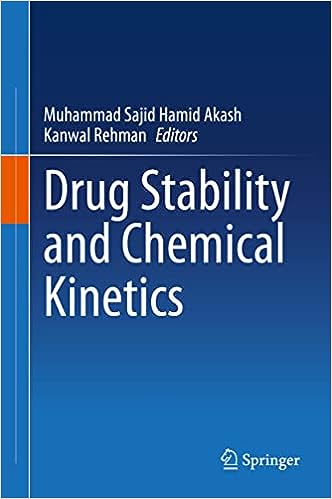Aligning the World: Global Harmonization of Stability Testing Regulations
Introduction
As the pharmaceutical industry becomes increasingly global, the harmonization of regulatory requirements for stability testing is more crucial than ever. Stability testing is a foundational aspect of pharmaceutical product development and regulatory approval, guiding shelf life determination, packaging selection, and storage conditions. However, regional variations in guidelines have historically presented challenges for multinational submissions and consistent
This article explores the progress, framework, and implications of global harmonization efforts in stability testing, focusing on the roles of ICH, FDA, EMA, WHO, ASEAN, CDSCO, PMDA, and other regulatory authorities. We discuss how harmonized standards benefit pharmaceutical companies, regulators, and patients worldwide,
and outline practical strategies for ensuring compliance in a unified regulatory environment.Why Harmonization Matters in Stability Testing
- Efficiency: Reduces the burden of duplicative testing for multiple markets
- Speed: Accelerates product approval across jurisdictions
- Quality Consistency: Ensures uniform product performance worldwide
- Regulatory Trust: Enhances transparency and predictability
The ICH as the Backbone of Harmonization
The International Council for Harmonisation (ICH) is the cornerstone of global regulatory alignment in pharmaceuticals. Its stability-related guidelines (Q1A to Q1F) are adopted or adapted by major health authorities, forming a standardized framework for drug stability evaluation.
Key ICH Guidelines
- ICH Q1A(R2): Stability testing of new drug substances and products
- ICH Q1B: Photostability testing
- ICH Q1C: Stability testing for new dosage forms
- ICH Q1D: Bracketing and matrixing designs
- ICH Q1E: Evaluation of stability data
- ICH Q5C: Biotechnological/Biological products
ICH Member Countries and Observers
- Regulatory Members: FDA (USA), EMA (EU), PMDA (Japan), CDSCO (India), TGA (Australia), Health Canada
- Industry Associations: PhRMA, EFPIA, JPMA
- Observers: WHO, ANVISA (Brazil), MFDS (Korea)
Zone-Based Stability Conditions: A Unified Matrix
Harmonized stability testing includes adoption of standard climatic zone classifications to reflect different environmental storage conditions worldwide.
| Zone | Climate | Long-Term Conditions | Accelerated Conditions |
|---|---|---|---|
| I | Temperate | 21°C / 45% RH | 40°C / 75% RH |
| II | Subtropical | 25°C / 60% RH | 40°C / 75% RH |
| III | Hot and Dry | 30°C / 35% RH | 40°C / 75% RH |
| IVa | Hot and Humid | 30°C / 65% RH | 40°C / 75% RH |
| IVb | Very Hot and Humid | 30°C / 75% RH | 40°C / 75% RH |
Regulatory Adoption and Regional Nuances
1. FDA (United States)
- Fully adopts ICH Q1A–Q1E
- Mandates CGMP-compliant execution and 21 CFR Part 211 adherence
- Supports CTD submissions aligned with Module 3.2.P.8
2. EMA (European Union)
- Requires full ICH compliance with some additional in-use stability mandates
- Includes reference to European Pharmacopoeia specifications
3. WHO Guidelines
- Aligns with ICH but emphasizes accessibility in low-resource settings
- Focused on stability in tropical climates (Zones IVa, IVb)
- Applied to vaccines and medicines under prequalification programs
4. ASEAN and TGA (Australia)
- ASEAN Stability Guideline mirrors ICH Q1 series but includes specific template formats
- TGA adopts ICH in entirety but may require additional data for refrigerated and frozen products
The Common Technical Document (CTD): A Platform for Harmonization
CTD is a globally accepted dossier format that includes stability data under:
- Module 3.2.P.8.1: Stability Summary and Conclusion
- Module 3.2.P.8.2: Post-Approval Stability Protocol
- Module 3.2.P.8.3: Stability Data (Raw data tables, graphs, timepoints)
Case Study: Streamlining Approval Across FDA, EMA, and WHO
A multinational pharmaceutical company submitted a generic drug dossier using harmonized ICH Q1A and Q1E protocols. By aligning their long-term and accelerated studies to standard zone IVb conditions and using CTD Module 3 formatting, they secured approvals from FDA, EMA, and WHO within six months of each other. Their stability program, including a matrixing design, reduced resource use by 30% while maintaining regulatory acceptance.
Challenges in Global Harmonization
- Local regulators may impose additional data or requirements
- Chamber qualifications must align with region-specific validations
- Language, document formatting, and regional templates may differ
- Varying expectations for microbial stability or photostability
Benefits of Harmonized Stability Strategies
- Reduced duplication of Stability Studies
- Predictable regulatory outcomes across regions
- Lower product development and regulatory costs
- Faster global rollout of medicines
Harmonization in Biopharmaceuticals
ICH Q5C governs the stability of biotech and biological products, which have higher variability and sensitivity. Globally harmonized practices here include:
- Protein aggregation monitoring
- Bioassays for potency
- Cold-chain stability protocols
Digital Trends Supporting Harmonization
- eCTD: Electronic submissions following CTD structure
- Global stability databases for trending and reporting
- Remote regulatory inspections and stability data access
Future Outlook
The trend towards a globally harmonized regulatory system is accelerating. International agencies are cooperating more closely through platforms like ICH, WHO PQ, and the International Pharmaceutical Regulators Programme (IPRP). Future directions include:
- Mutual recognition agreements for stability data
- Harmonized data integrity and ALCOA+ principles
- Digital twins and modeling for predictive stability assessment
- Green stability protocols with energy-saving initiatives
Conclusion
Global harmonization of stability testing regulations has shifted from aspiration to reality. Pharmaceutical companies that embrace harmonized ICH guidelines, invest in quality systems aligned with regional expectations, and adopt CTD/eCTD submission strategies can achieve faster, more reliable product approvals across the globe. By understanding the evolving regulatory landscape, organizations can avoid redundancy, maintain compliance, and bring safe, effective medicines to patients worldwide. To stay updated with regulatory tools and resources, visit Stability Studies.

